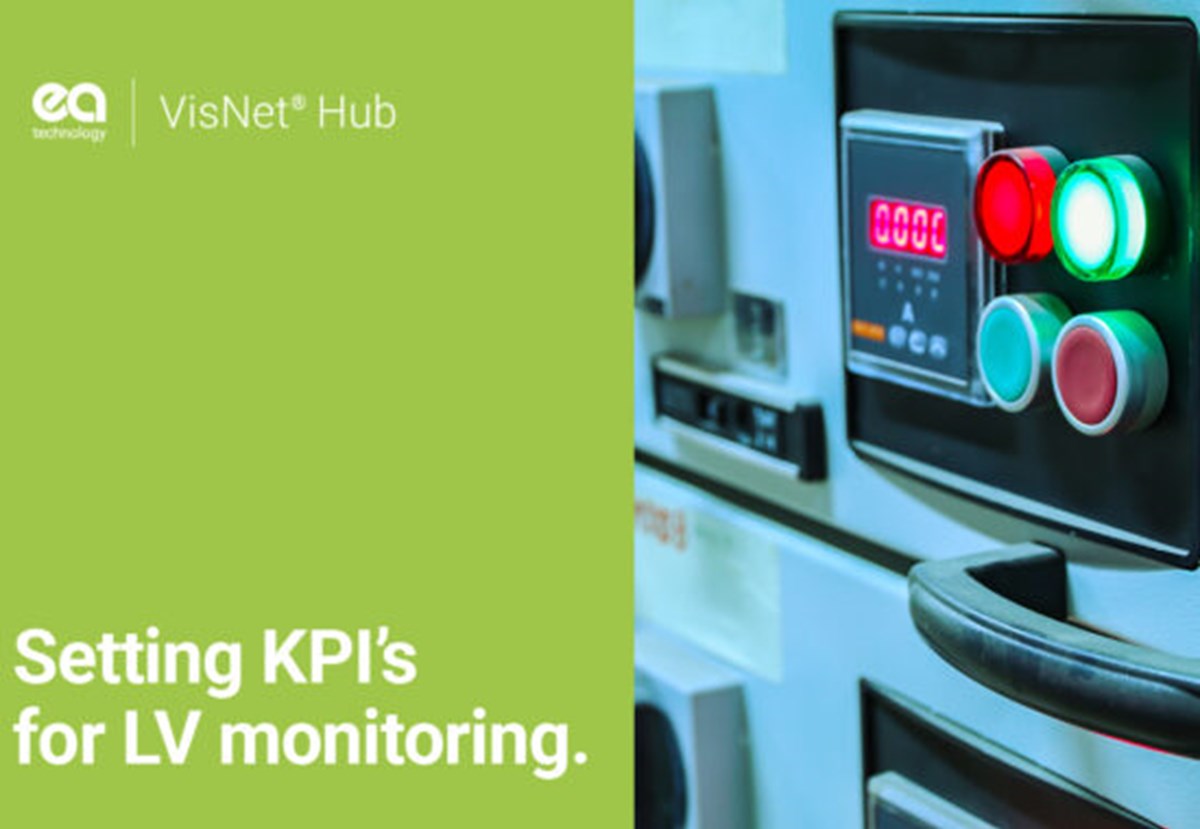Blog | Setting KPIs for LV Monitoring
-
29 October 2020
-
EA Technology

Sophisticated network control has been deployed on the high voltage network for some time. The challenge is now to reach the same level of deployed control on the low voltage (LV) network with the same capability to support the Distributed Energy Resources (DER) penetration. But the sheer scale of the LV network adds an additional challenge, meaning this must be done at a greatly reduced cost. With effective intelligent technology now readily available, setting KPIs for LV monitoring is an important element of demonstrating return on investment. Here are some of the ways you can measure the value of LV monitoring…
Remember your core objectives
A good starting point is to look at your organisational objectives, which are likely to fall into distinct categories such as:
- Business and technical objectives, with SMART metrics attached to them
- Technical performance, including energy consumption, renewable energy source (RES) generation ratio, peak-load reduction
- Economic performance, taking into account factors such as the average cost of energy consumption and average estimation of cost savings
- Environmental and social performance, including indicators of CO2 emissions reduction, bushfire risk management and user satisfaction with improved energy performance in neighbourhoods
Use these objectives to underpin how you approach developing KPIs specific to LV monitoring, to ensure that how you measure success is fully directed towards what you want to achieve as an organisation. And if you still need convincing of the value of LV monitoring in supporting those goals, you can get a quick overview in our blog When, Why and How to Monitor at Low Voltage.
Look at the performance of different energy management strategies
Next, it’s time to look at the energy management strategies that LV monitoring can support, such as:
- Demand response – how can you use LV monitoring to help optimise the network by maximising efficiency and demand flexibility contribution when triggered demand response events occur?
- Energy storage – what role can LV monitoring play in improving grid-balancing services to support the use of PV generation and possible electrical storage
- Smart grid strategies – how can LV monitoring help the distribution network to minimise energy import and export and the impact on network power flow and voltage constraints within a smart-grid structure?
- Smart integration of electric vehicles (EVs) – how will you use LV monitoring to help respond to the need to integrate EVs?
See how key projects have set LV monitoring KPIs
There’s nothing new under the sun, and major research projects have already done the legwork for you. For example, the European Commission-funded Upgrid project’s downloadable Report on Common KPIs provides a natural starting point, thanks to its summary of high-level metrics, which helpfully includes formulas to crunch the numbers also. We’ve listed a selection of LV monitoring-related KPIs from the Upgrid report below to get you started:
- Average time for LV fault location
- Quality of supply improvement in LV Hosting capacity of electric vehicles (EVs)
- Fulfilment of voltage limits
- Energy losses
- Monitoring data volume
- Characterised LV consumption
- Availability of intelligent network components
- Improved lifetime of transformers
- Reduction in greenhouse gas emissions
- Use of protocol standards
Outcomes of LV monitoring
By implementing the right approach to LV monitoring at scale, you can achieve a variety of benefits, from a decrease in maintenance and lifetime costs and improved network performance to extended asset life; thanks to limited current flow on restart, with less stress on the asset. You can increase resource efficiency and reduce operational expenditure as well as network imbalance, offering potential savings through load related network reinforcement deferrals.
Setting KPIs to benchmark LV performance and demonstrate improvements will maintain focus while showing a return on investment (ROI) on the low-cost equipment needed for LV monitoring.
